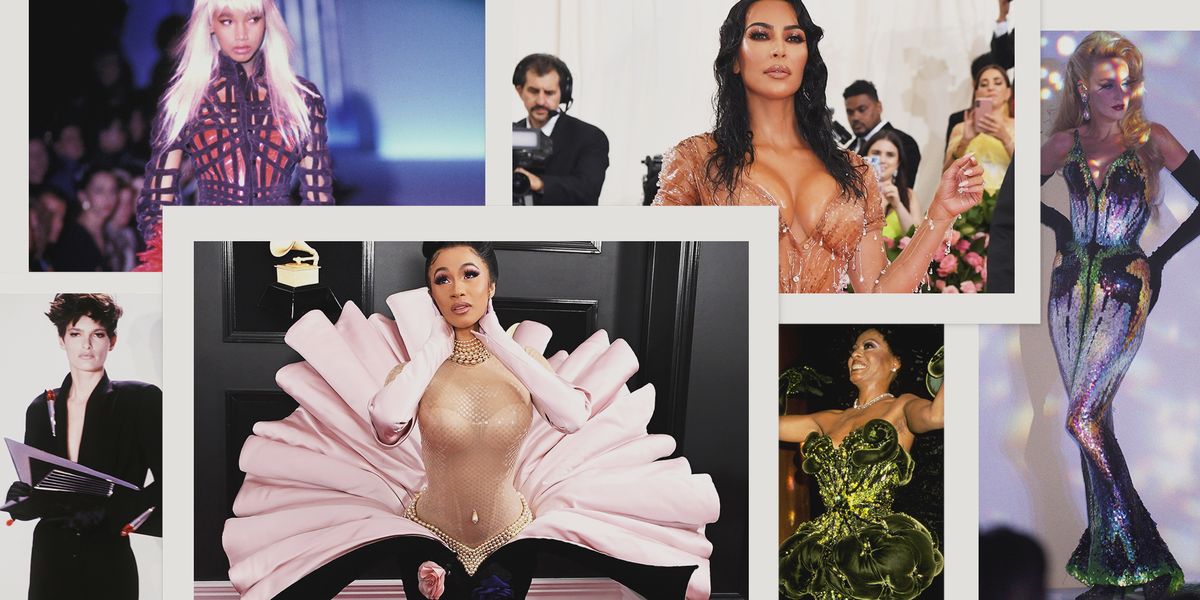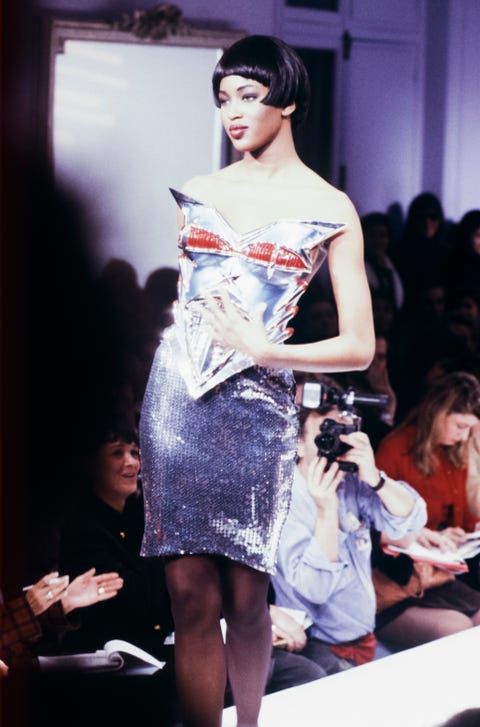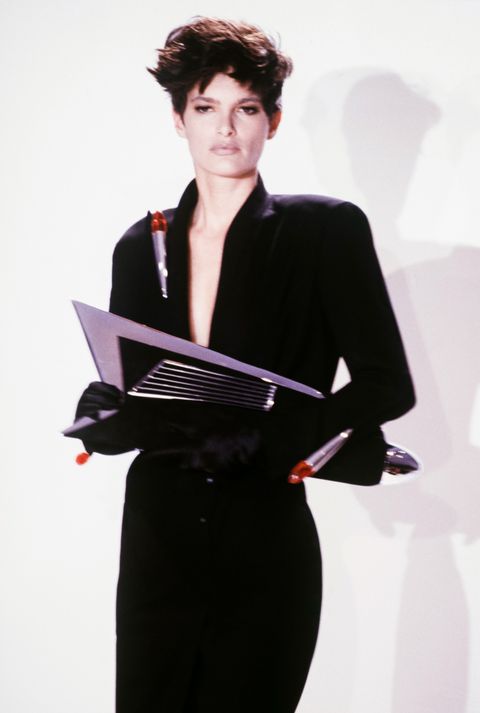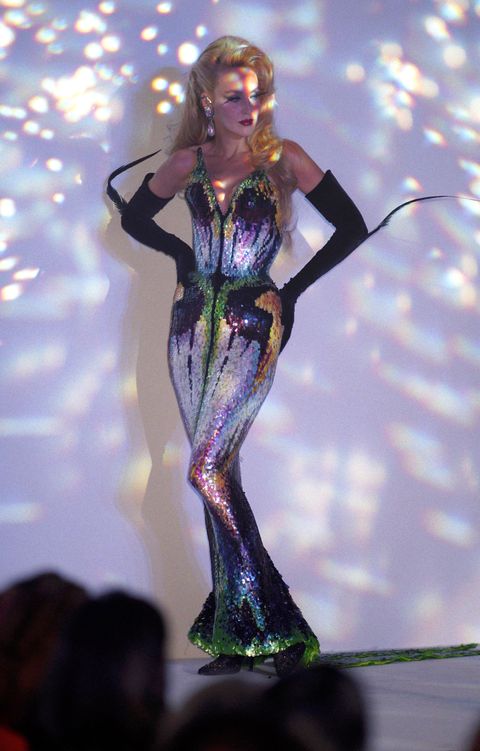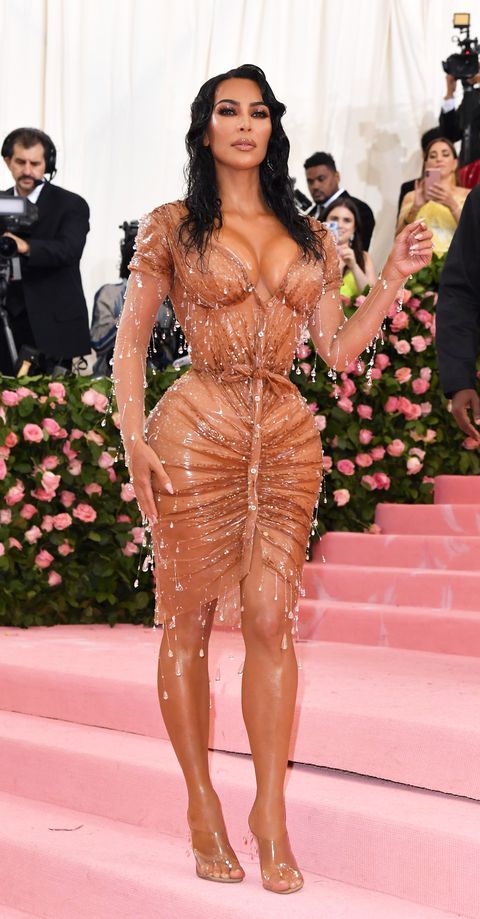Style Points is a weekly column about how fashion intersects with the wider world.
For his fall 1989 “Buick” collection, Manfred Thierry Mugler turned women into race cars. Clad in souped-up supermodel silhouettes that resembled high-design 1950’s automobiles, his models strutted around in their hubcap bra cups and fender peplums. They shared the hard-edged mien of the women in Tamara de Lempicka’s paintings, all chrome finishes and knowing sneers. The era’s cars had been modeled on female curves in an attempt to humanize the machines; now, Mugler was reverse engineering the equation. That show might have been the ultimate expression of his vision—the female body celebrated and transformed into something both slickly commercial and dreamily conceptual.
The late ’80’s and early ’90’s were bastions of extreme body consciousness and extreme runway theatricality. And the French designer, who passed away yesterday at 73, lived in the Venn diagram between the two. Understated, in any sense of the word, he was not. Welding together Surrealism, sci-fi, and Old Hollywood, his designs always went up to 11. He loved a larger-than-life, impossibly glamorous woman—Naomi Campbell, Jerry Hall, and Iman populated his shows—and delighted in dressing boundary-pushing pop icons from Diana Ross to Madonna. His shows transmuted women into insects, motorcycles, and mermaids or turned them into archetypes, from angels to androids.
Even as fashion began its mid-’90’s shift into coolly understated minimalism, complete with interchangeable-looking models who’d rather shuffle down a catwalk than vamp along it, his approach remained as heightened and exaggerated as his famously intoxicating Angel perfume. Wasp waists, towering hairdos, exoskeleton-like metallic bustiers, and dorsal cleavage that would make McQueen’s bumster look tame were some of the offerings on his sartorial menu. Too much was never enough. It’s no exaggeration to say that the extreme celebrity and pop-star fashion statements we’ve seen since then owe a debt to his imaginative audacity.
Even after he stepped down from the label in 2001 to focus on designing for the stage, Mugler’s gold mine of vintage treasures continued to be a source of inspiration, not to mention a badge of fashion cred. Celebrities like Cardi B and Kim Kardashian, who could have stepped out in any current-day designer they wanted, flocked to his ’80’s and ’90s looks, respectively the Botticelli-inspired Venus dress and an NC-17 reboot of the creation he made for Demi Moore in Indecent Proposal. (Mugler also came out of semi-retirement to create a pearlescent wet-look gown for Kardashian to wear to the Met Gala.) But those enduring pieces are far from the only stamp he put on fashion. The house that bears his name continues to outfit a new generation of body-baring, risk-taking pop icons, from Miley Cyrus to Dua Lipa, all of them carrying on that proudly OTT legacy.
This content is created and maintained by a third party, and imported onto this page to help users provide their email addresses. You may be able to find more information about this and similar content at piano.io
